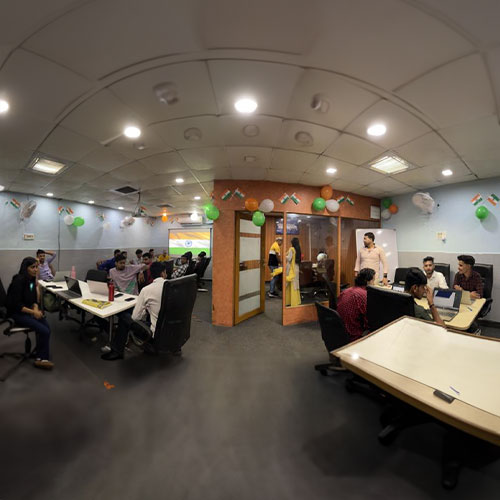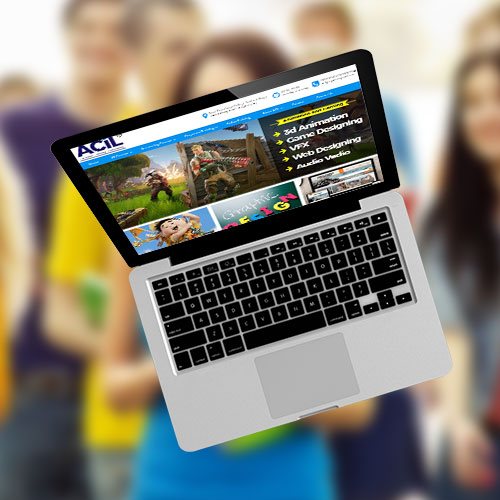React JS Courses are popular among professionals who are interested in mastering the fundamentals of JavaScript, web development, or both. ACIL provides full stack training in how React can be applied to a development environment for creating reusable UI components that minimize the need for manual updates to code.
What is the Difference in React Js and React Native in the Course Content?
ACIL teaches both contents let see below how both are different:
React Native is an open source library for building natively accessible cross-platform mobile applications, while React Js is a JavaScript library for building user interfaces.
React Native is more or less what you would expect from a React framework for mobile, but it has access to the device’s native components and libraries. It also works on Android as well as iOS, which makes it more attractive than its counterparts.
React Js only runs on the web browser which makes it less desirable in certain environments. However, React Js does have a lot of different use cases outside of mobile applications such as building web interfaces and even desktop apps with Electron.
How React is Different From Other Courses?
React js is a JavaScript library which is used to create a UIs for web and mobile applications. It is one of the most popular front-end libraries.
React js is often compared with other frameworks such as Angular and Vue js. React js also has a few differences from these frameworks such as:
1) Reactjs UI components are just JSX tags to represent the HTML tags, this makes it easier for developers to learn and implement reactjs without an extra layer of abstraction.
2) This framework allows the code reusability by rendering it on server side and client side, which reduces an overhead of transferring data between client and server over HTTP requests. This allows the system to show feedback quickly and use less memory on mobile devices.
Why React JS is Demanded Course in the Market?
React is a JavaScript library for building user interfaces. It was developed by Facebook and Instagram. The library has gained popularity due to its lightweight features and support from Facebook and Instagram.
React JS has been used by many developers because of its flexibility and simplicity. It also allows developers to make changes on the fly without worrying about the browser refreshing all over again. React JS enables developers to build interactive user interfaces quickly with less code compared to other frameworks.
React JS Course Content
MODULE 1 React Introduction?
- What is React?
- Advantages of ReactJS
- Limitations of React
- How does ReactJS work ?
MODULE 2 Introduction to JSX
MODULE 3 Virtual DOM
- JS vs JSX
- React Components
- Attributes e.g. class, div and id etc
- Child Components and Namespaces components
- Javascript expressions in JSX like attribute, boolean or child expression
MODULE 4 View an ReactJS application in Plunker
- Setup Cloud9
- Using npm & package.json file
- Webpack & ES6 Introduction
- Organizing your source code
- React browser plugin
MODULE 5 Creating a simple React Application
- Nesting Comps
- React render
- React Props
- Props validation with data types
- States, Initialize states and update states
MODULE 6 React UI and Forms
- Form components
- Controlled form components
- Uncontrolled form components
- Checkboxes and Radios
- Select box with default selected value
- Form validation
- Styles
- Animation Introduction
MODULE 7 Component Life Cycle
- Initial Render
- Props Change
- Stage Change
- Component Unmount
MODULE 8 React Router and Other JS concepts
- React Router configuration
- Router History
- If-else in JSX
- IIFE in JSX for complex logic
MODULE 9 Event Handling in JSX
- onClick, onKeyUp and other useful events in React
- Sharing events across the components
MODULE 10 React Styles
- CSS and inline styles
- Setting up the react for React bootstrap
- Implementing the react bootstrap components
MODULE 11 React Router & Navigation
- Loading the router library
- Router configuration
- Passing and receiving parameters
- React-cookie integration
MODULE 12 Flux
- Flux Architecture?
- Flux Components
- Stores
- Dispatchers
- View Controllers
- Actions
- Views
- How Flux works
- Flux and React
MODULE 13 Redux
- One Store
- Provider Component
- Actions
- Reducers
- Redux application development
MODULE 14 Unit Testing and other testing techniques
- Tools for Unit testing
- React Unit testing
- JEST
- React Component Testing
- React Router Testing
Career Options After React JS Training
There is a great demand for react developers in the market as it is the new technology which is changing the business around us. The need of react developers has been increasing as its adoption rate has gone up. According to some reports, there will be a huge shortage of this skillset in 2022.
The best career options after React JS training are:
– Front-End Developer: You can work on developing front-end code for a company.
– Backend Developer: You can work on developing backend code for a company.
– Senior Front End Developer: You will play an active role in ensuring that the front end remains bug free and up to date with the latest trends in this domain.
What is Live Project Training in ACIL?
ACIL Teachers guide you through the process of developing a website, while providing feedback and expert knowledge that can’t be found in any textbook or lecture.
Live Project Training is a form of training that gives practical experience with live projects to help learners understand the process of designing, developing, and managing software projects.
This helps learners explore the nature of React development processes in a live environment that is similar to real-world settings.
With this form of training, learners get hands-on experience in designing, developing, and managing multiple website projects. This helps them understand how to create websites from scratch without any assistance.











